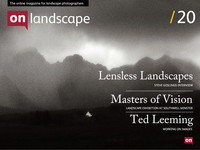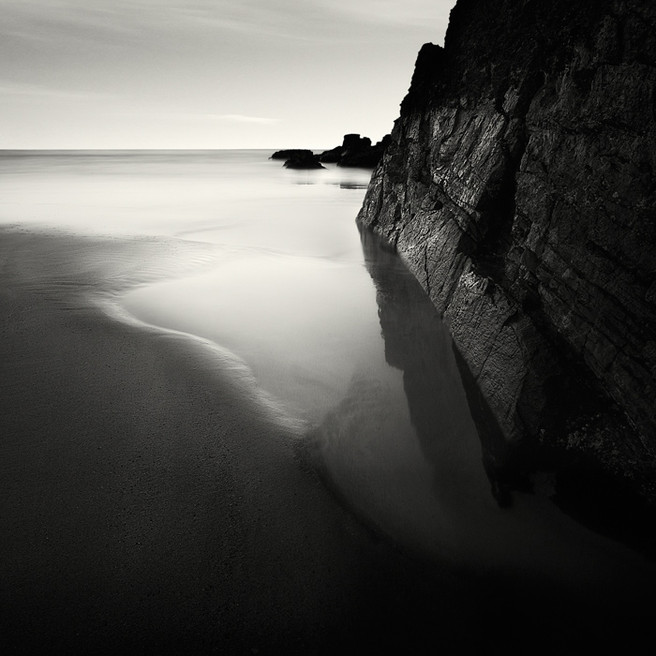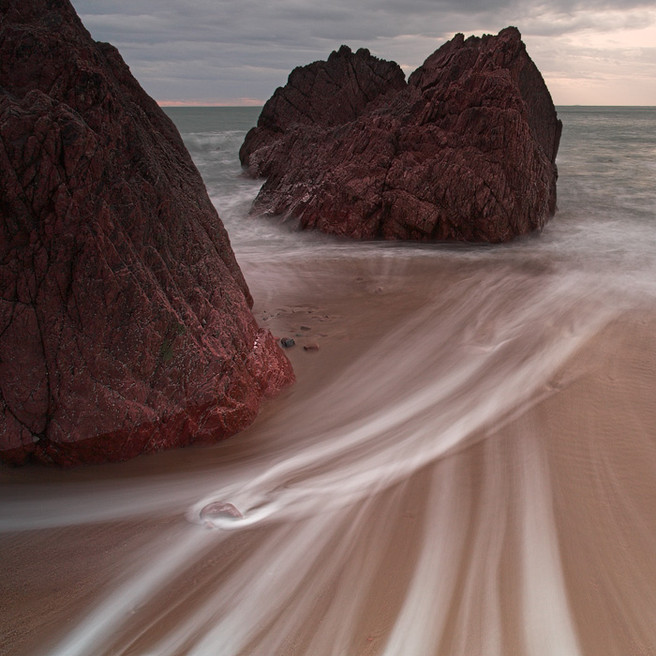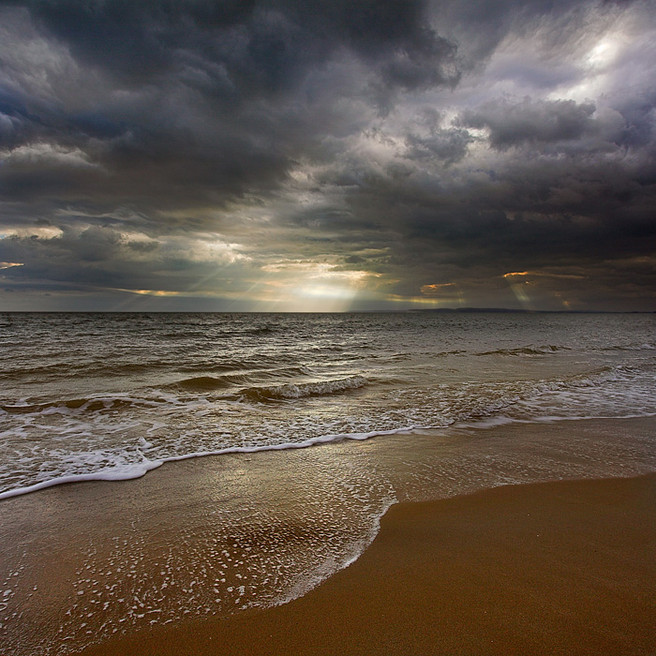Featured photographer

David Baker
My work is showcased on my long standing photoblog: milouvision.com. I am interested in the sea, the forest and common ground. I have exhibited widely with solo and collaborative shows with photographers and other artists.

Tim Parkin
Amateur Photographer who plays with big cameras and film when in between digital photographs.
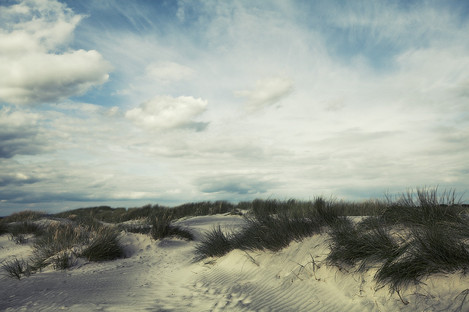 We're featuring a photographer that I met on a trip to the lake district in January. I didn't realise quite what a large amount of great work he had generated in such a short amount of time and I had great fun going through his photoblog whilst putting this together. David Baker!
We're featuring a photographer that I met on a trip to the lake district in January. I didn't realise quite what a large amount of great work he had generated in such a short amount of time and I had great fun going through his photoblog whilst putting this together. David Baker!
In most photographers lives there are 'epiphanic’ moments where things become clear, or new directions are formed. What were your two main moments and how did they change your photography?
Just after I started using an SLR, I saw a photograph by Guy Edwardes of Keyhaven/Milford beach at sunset and the sea looked fantastic drawn over the shingle beach. The wave trails looked ethereal. I tried it myself a week or so later and that was that I was caught and I’ve been a coast hugger ever since. It’s a fair comment that the majority of my work is a variation on this theme and hopefully will continue to be so.
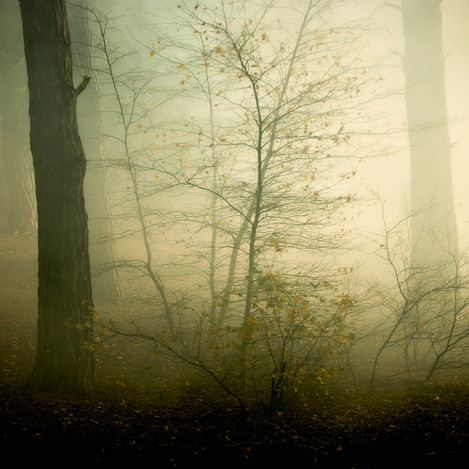 The second is really linked to the first and that was a visit to the Coast Exposed exhibition in Greenwich in 2005
The second is really linked to the first and that was a visit to the Coast Exposed exhibition in Greenwich in 2005
For example, I recall a panoramic print of David Noton’s St.Michael’s Mount about six feet across, and one of Joe Cornish’s (I think of Horden beach) on a light box that was mesmerising. To quote from the blurb: …[the exhibition is]… drawn from the work of superb photographers working for the National Trust and Magnum Photos, [and] it evokes Britain’s manifold seascapes with such exuberant veracity that you can practically taste the salt in the breeze. But as the exhibition’s title suggests, this is also a show with an agenda. Britain’s coastline is “exposed” in more than the shipping-forecast sense. Those mighty cliffs and ancient harbours may seem indomitable. But the reality is that many of our finest seascapes are all too fragile, all too easily scarred or destroyed.
From our brief chat on the phone, I believe you first bought a guitar before changing your mind and settling on a camera. There is obviously an urge to be creative going on, what do you think triggered it and why photography?
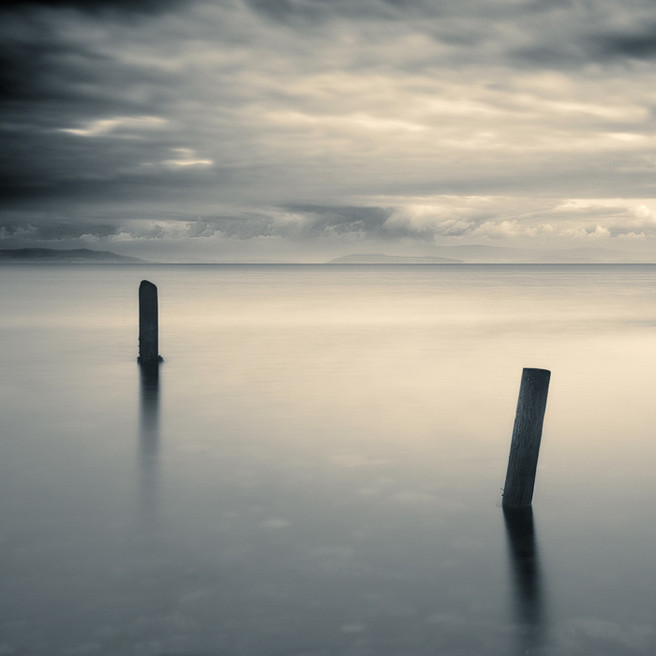 At 15 I wanted to be an architect. My dad had introduced me to an architect client and despite the then (1978) 33% unemployment in the industry, I was keen on pursuing architecture as a career. Despite good grades, events didn’t entirely pan out as planned, and after dithering about a course at Salisbury Art College and flirting with a technical drawing apprenticeship, I joined the civil service. It’s fair to say that there’s been little creativity work-wise since. I’ve always had a great love of art (especially sculpture) so I guess the creative ‘urge’ has always been there albeit mostly dormant.
At 15 I wanted to be an architect. My dad had introduced me to an architect client and despite the then (1978) 33% unemployment in the industry, I was keen on pursuing architecture as a career. Despite good grades, events didn’t entirely pan out as planned, and after dithering about a course at Salisbury Art College and flirting with a technical drawing apprenticeship, I joined the civil service. It’s fair to say that there’s been little creativity work-wise since. I’ve always had a great love of art (especially sculpture) so I guess the creative ‘urge’ has always been there albeit mostly dormant.
I started using a Canon A70 in about 2003/04 when my wife, Stef, and I began visiting stone circles, dolmens and standing stones. Despite my advanced years, I used to be a keen online gamer and during a lull in competitions and tournaments, a fellow player talked about his new camera, a Canon 300D, and suggested that I also buy one as I had become disillusioned about online gaming. This occurred at the same time when it was confirmed that I had no musical ability at all. A friend in Cornwall is a marvellous guitar player and after a visit, I thought I’d be Paul Weller within a month or two. Sadly not. So, in January 2005, trying to engage a creative aspect of myself, I also bought a 300D.
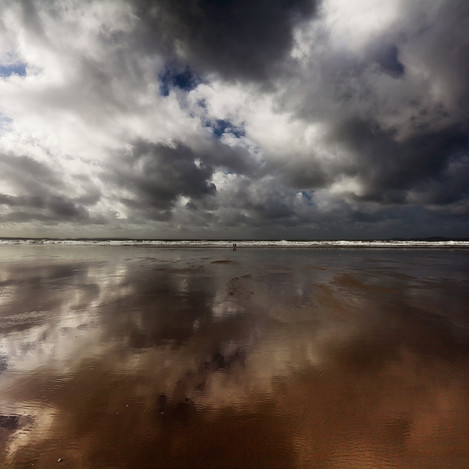 Almost immediately I wondered what I had let myself in for as I had always used the A70 on auto mode. I started reading magazines, books (fortunately Southampton has an excellent library) and looking at other images in various exhibitions and photoblogs. In the spring of 2005, I started posting images on a web forum and as a consequence, in November 2005, Jamey (of
Almost immediately I wondered what I had let myself in for as I had always used the A70 on auto mode. I started reading magazines, books (fortunately Southampton has an excellent library) and looking at other images in various exhibitions and photoblogs. In the spring of 2005, I started posting images on a web forum and as a consequence, in November 2005, Jamey (of
http://www.jameyhoward.com/photoblog/) started a photoblog and convinced me that it was a good idea to start one too.
Why photography? It was accessible and there was an immense amount of support and inspiration from the photoblog community.
You have a fascination with the coast (and water in general?) why do you think that is? Are there are other subjects that intrigue you in the same way.
I found this a very difficult question to answer and to articulate a considered response. By rights, I should be a videographer as I find the sound of the sea equally as important as the visual representation. The existence and the movement of water in a landscape are what principally engages me. ... (more to come - ed)
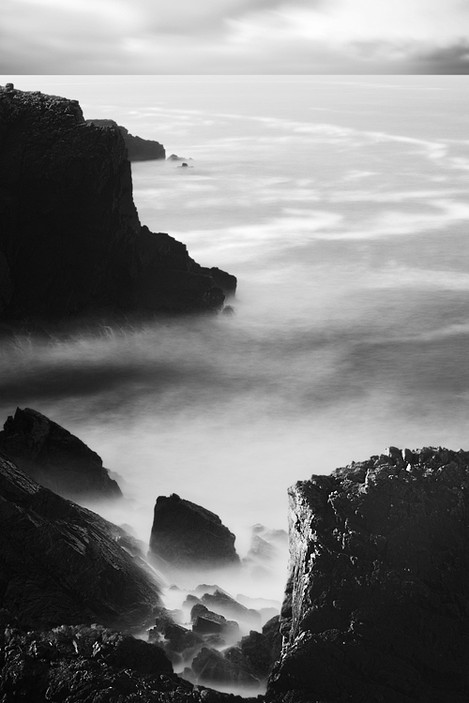 Could you tell us a little about the cameras and lenses you typically take on a trip and how they affect your photography
Could you tell us a little about the cameras and lenses you typically take on a trip and how they affect your photography
I think my set-up is very similar to a large number of seascapers and landscapers, namely a 5D MkII, a 17-40, a 50mm and a 70-200 f/4. This year I bought a 24mm TS-E II. Before the tilt-shift, the 17-40 was mostly welded to the camera, and I don’t think I ever took if off the 300D. During the past couple of years, I have used the 50mm and increasingly so the 70-200 for seascape work as I’ve moved away from the 17mm ultra wide angle.
Incidentally, as I do a lot of square cropping so I’d love to be able to do that in-camera by having a button that changed the format from 3:2.
Every now and then I think about exploring medium or large format.
Your post processing covers a quite broad range of styles, all resolved with equally high standards (black and white, pastel colour negative looks, textures, etc). Which do you think is most ‘you’?
Thanks for your kind words! I’m not sure if I have a distinctive look even though much of my subject matter is consistent. I do like to experiment principally via black and white and cross processing.
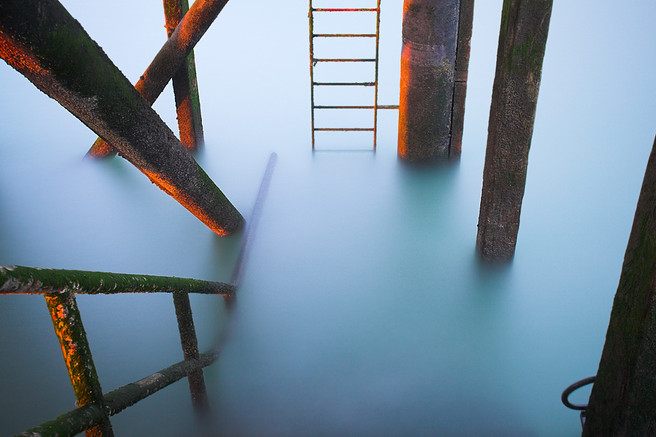 I hate to put it like this, but you do have a fascination with Groynes as well, a Michael Kenna influence?
I hate to put it like this, but you do have a fascination with Groynes as well, a Michael Kenna influence?
Groynes and sea defences feature as they are so prevalent along the shingle strewn south coast. The first real open sea to me is at Keyhaven/Milford and without the groynes, it’ll be a shingle beach only with the sea and the sky. Admittedly that in itself is an attractive combination but the continuous variation of the sea’s movement around a groyne provides a huge amount of focus for me.
Incidentally, I only discovered Michael Kenna’s work, a year or two after I started the photoblog. I saw David Burdeny’s work first in Silvershotz magazine and thought it fab. I bought his book (my first photobook I think) immediately. After a trip to Edinburgh a few months afterwards, I went to Beyond Words and saw and bought the two Michael Kenna retrospective books.
Tell me what your favourite two or three photographs are and a little bit about them.
The Tide Pool
This is one of my favourite shots taken from a trip to the Outer Hebrides in February 2008 and was taken next to one of the immense rock stacks on the Traigh Ghearadha beach about 13 miles north of Stornoway just below the ‘Bridge to Nowhere’.
It’s a 90 second exposure with the tripod set just above the sand. The sea in the tide pool was making its way back to the shoreline. Behind me, a fabulous sunset albeit happening 25 miles away across the other side of Lewis but I wanted to capture this journey back to the sea.
This image encapsulates the contrast between light and shade I found across Lewis and Harris. The top right is a tad too dark (less sun and some shadow) and whilst not a lot is going on in the bottom left, I love it.
Wesdale Bay
What a place. I had a weekend away in Pembrokeshire principally to see an exhibition by Rupert Heath at St. David’s and to see Westdale bay which featured in his portfolio. This image is coast hugging – the bay is strewn with rocks of all sizes and seem to be graduated in their redness. The sand is red as is the earth leading down to the bay. It’s one of the two places where I thought I was going to be caught out by the tide and seriously considered abandoning my gear.
Hengsitbury II
My tribute to one of my favourite Charlie Waite images. I saw his printed at an exhibition at the Oxo Gallery, South Bank, London, and it was quite amazing.
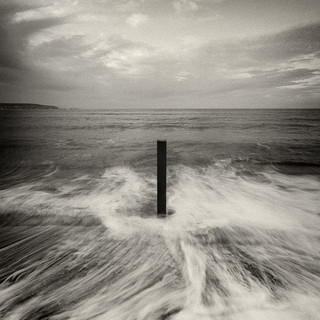 You’ve had a few book covers too, how did you make these sales and how does it feel having your pictures used in this way?
You’ve had a few book covers too, how did you make these sales and how does it feel having your pictures used in this way?
Most of the sales have been through the Trevillion agency which is a managed library. I read a feature about Michael Trevillion in Black & White Photography so I submitted 20 or so images and five were taken on. I’m constantly surprised and flattered that there are sales, and it’s instructive to see how designers use images with others to get the right illustration for the book. Despite working in a corporate governance policy environment, I have no entrepreneurial ability at all so I’m happy for an agent to handle all the necessary details!
What sort of post processing do you undertake on your pictures? Give me an idea of your workflow.
I use a ‘converted’ version of RawShooters Essential (converted to recognise the 5D Mk II) as a RAW converter. I know it’s been discontinued since about 1485 due to the Adobe takeover and the development into Lightroom but I like the interface and it works for me. The majority of my mono conversions are via RSE (I prefer it to say, Photoshop or Silver Efex). I use Photoshop to crop, to balance colour, curves to draw out or to reduce detail, the inevitable clean up and sometimes to dodge/burn via the 50% grey method. It really depends on what I’m trying to achieve at the time. I’m a fairly ruthless editor. I’m always chopping away at saved images in periods of self doubt, deleting material left, right and centre.
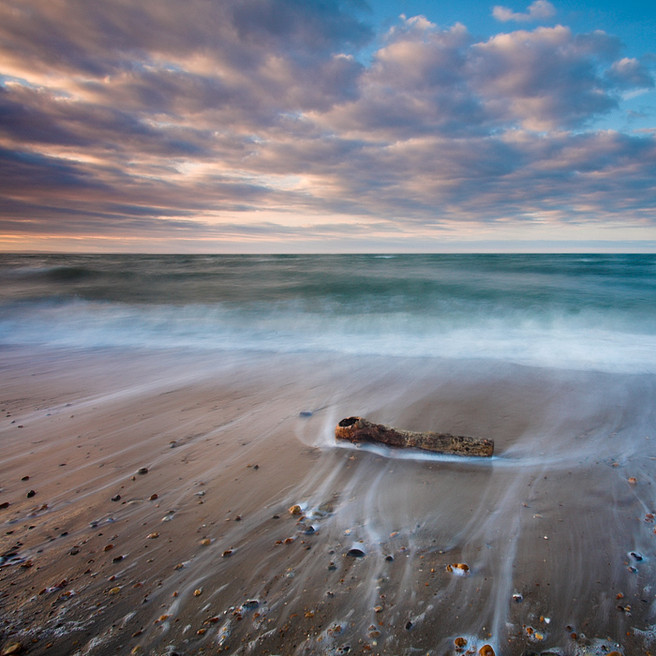 Do you print much of your work? If so how have you approached it and if not, why not?
Do you print much of your work? If so how have you approached it and if not, why not?
I’ve taken part in one solo and two joint exhibitions so there’s been a fair amount of printing over the last couple of years or so. I used a variety of firms and if I sell a print outside an exhibition, I usually use the Printspace. The most recent exhibition (with Andy Bell of Deceptivemedia.co.uk) tried to replicate a printed version of an online photo slide-show so it was, amongst other factors, frame free. We printed about 50 or so images each so cost was a pretty major contributory consideration.
Tell me about the photographers that inspire you most.
Perhaps one of my favourite photos is Chesil Beach by Charlie Waite – coast hugging encapsulated –his black and white images are enormously inspiring.
I’m also inspired by Marco Paoluzzo’s North/Nord collection. Rupert Heath’s large format image of Westdale Bay introduced me to my favourite part of Pembrokeshire coast. Through his then photoblog, Absolutely Nothing, Tristan Campbell motivated me, not that he knew it (!), to taking a trip to the Outer Hebrides in 2008.
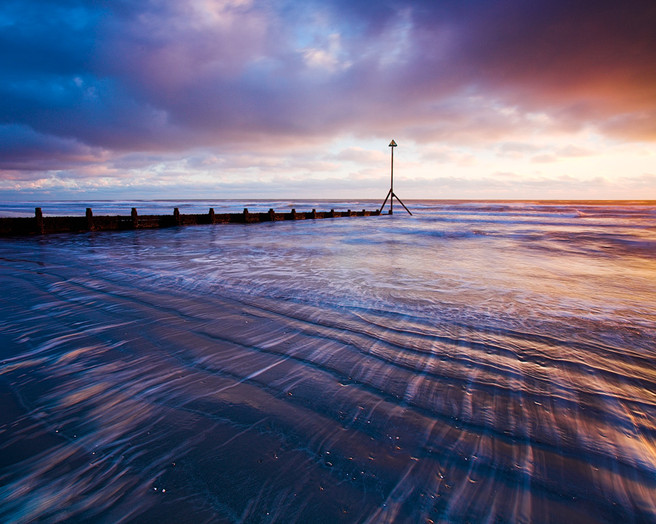 I have always followed a whole host of photobloggers who had provided and still provide, a tremendous amount of inspiration and motivation. I’d like to say a word of thanks to my pal Gary Shrimpling (who now concentrates solely on his brilliant street work) who via his photoblog introduced me to long exposure monochrome seascapes.
I have always followed a whole host of photobloggers who had provided and still provide, a tremendous amount of inspiration and motivation. I’d like to say a word of thanks to my pal Gary Shrimpling (who now concentrates solely on his brilliant street work) who via his photoblog introduced me to long exposure monochrome seascapes.
What sorts of things do you think might challenge you in the future or do you have any photographs or styles that you want to investigate? Where do you see your photography going in terms of subject and style?
I’m trying to articulate a photo project which at present I’m finding a challenging process. I have a lot of admiration for example for Rod Hudson’s Skirrid Hill series and Chris Tancock’s stone series. I’m aware that it has to be personal to me, the subject should allow access to create the images I want, and that there should be a story. The New Forest is about 20 minutes away and I only have a few tree images. I suspect the project will be about identifying the equivalent of the sea’s energy howsoever defined within the forest and heathland environment or maybe illustrating the four elements within a forest setting.
Who do you think we should feature as our next photographer?
Mark Voce for his printing explorations
Mike Stacey for his ethereal dreamscapes, especially Temporal Coast (also at http://www.flickr.com/photos/mikestacey/)
Sven Seebeck for his northern landscapes
Marco Paoluzzo for being Marco Paoluzzo
Thanks for that David - if you want to see more of David's work you can view his photoblog or his flickr stream.

